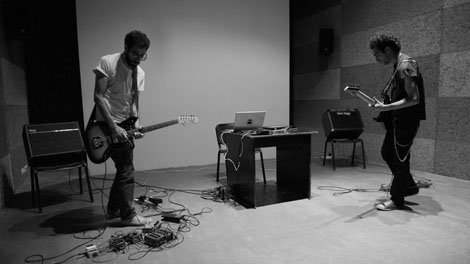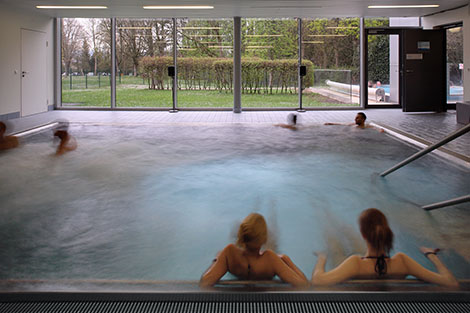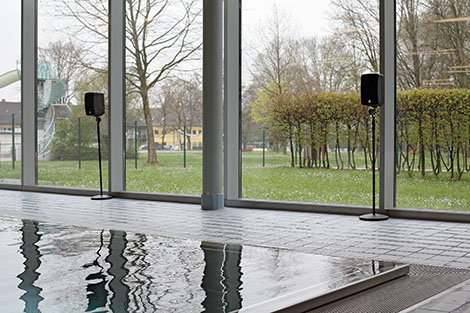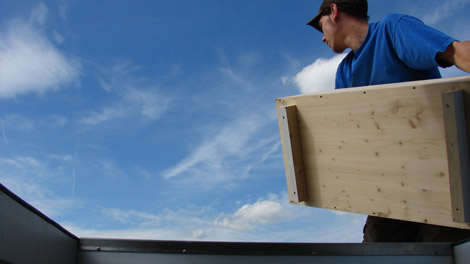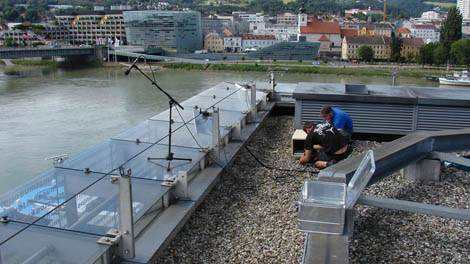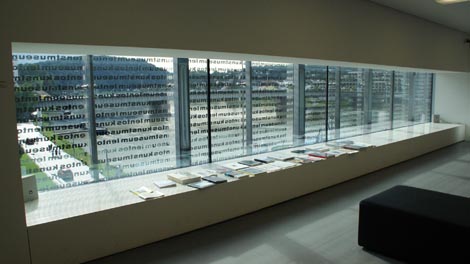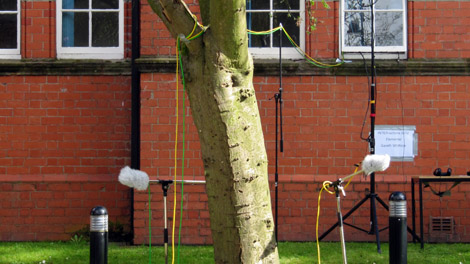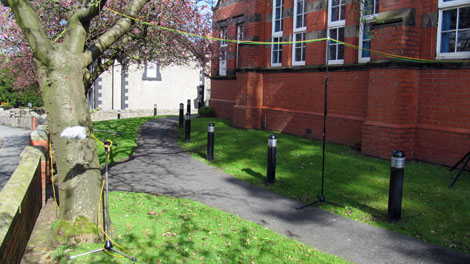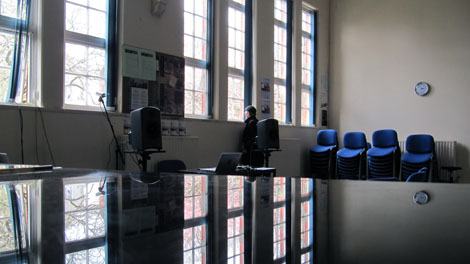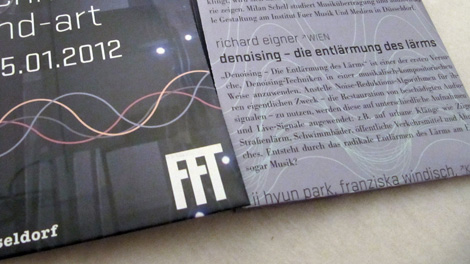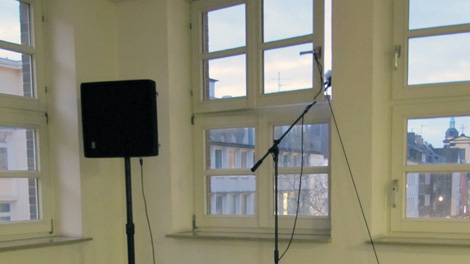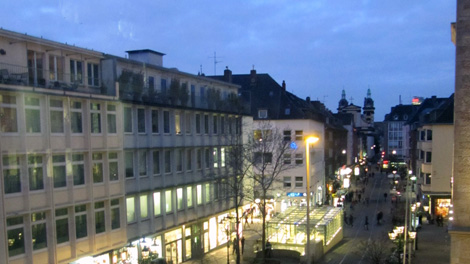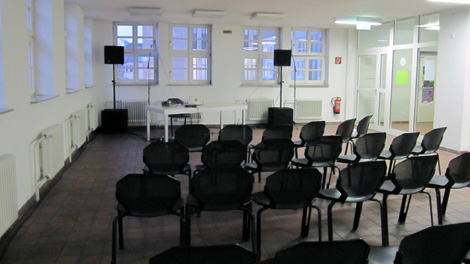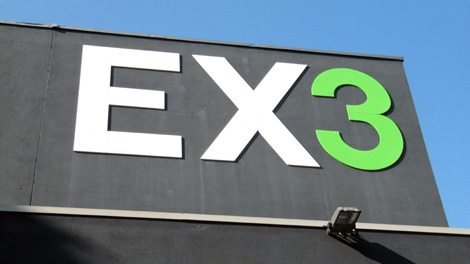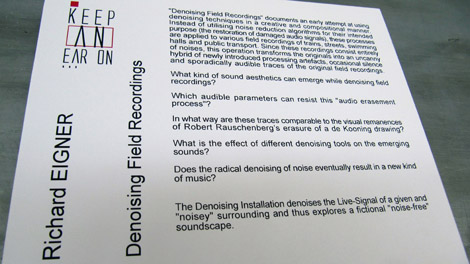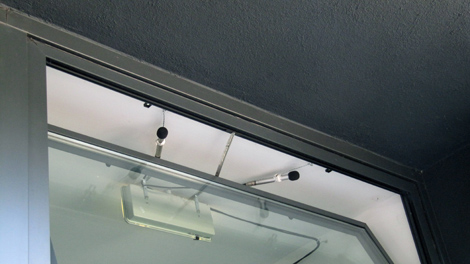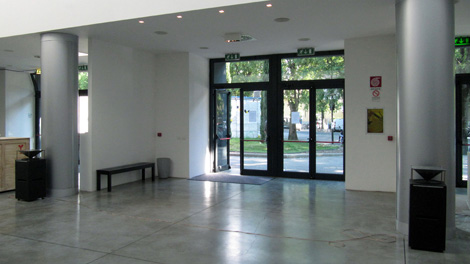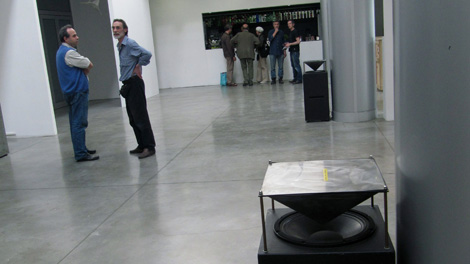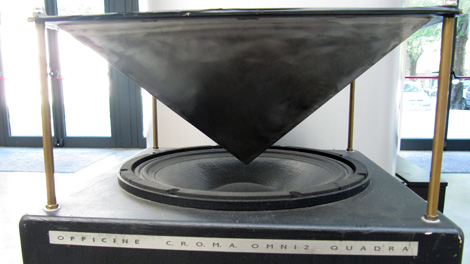Denoising Field Recordings
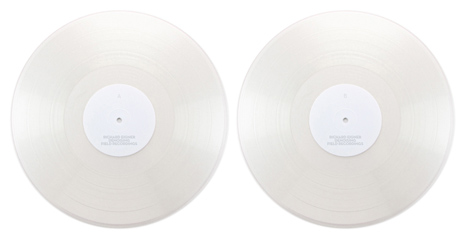
Denoising Field Recordings documents an early attempt at using denoising-techniques in a creative and compositional manner. Instead of utilising noise-reduction-algorithms for their intended purpose (the restoration of damaged audio signals), these processes are applied to various field recordings of trains, streets, swimminghalls and public transport. Due to the fact that these recordings consist entirely of noises this operation transforms the originals into an uncanny hybrid of newly introduced processing artefacts, occasional silence and sporadically audible traces of the original field recordings. What kind of sound-aesthetics can emerge while denoising field recordings? Which audible parameters are able to resist this »audio-erasement-process«? How are these traces comparable to the visual remanences of Robert Rauschenberg's erasure of a de Kooning drawing?
Denoising Field Recordings is released as a limited edition of see-through 12" vinyl with an intruiging white-on-white cover designed by Hans Renzler.
»Until recently I was aware of the 'denoiser' only as an audio restoration tool to remove the noise from historical recordings or to filter out cracks on old vinyl. [...] But then I got to know the young Austrian musician, DJ and denoising-fetishist Richard Eigner. Since then my ears have been full. Of almost nothing! For Eigner had the wonderful idea of using the technical potential of such denoising tools as the plug-in Waves X-Noise or the hardware Cedar DNS 1000 as an artistic means of of deconstruction. 'What is left of extreme noise music, for example', the conceptual artist in him wondered, 'if I extremely denoise it? In an ideal case: silence?« Fritz Ostermayer (Spike #21)
Denoising Noise Music
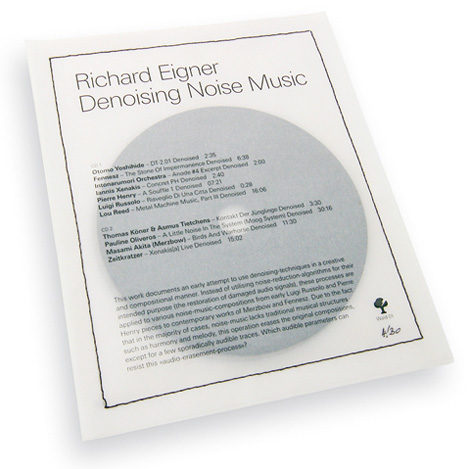
Denoising Noise Music applies audio restoration processes to various noise-music-compositions from early Luigi Russolo and Pierre Henry pieces, to contemporary works of Merzbow and Fennesz. Due to the fact that in the majority of cases, noise-music lacks traditional musical structures such as harmony and melody, this operation erases the original compositions, except for a few sporadically audible traces.
Otomo Yoshihide - DT-2.01 (Denoised by Richard Eigner)
Lou Reed - Metal Machine Music, Part III (Denoised by Richard Eigner)
»But of course one may use denoising algorithms also in a different way. You may put them to work for other than analytical and/or restoring purposes, as a compositional tool, in a creative manner. This is what Richard did. He had a simple but beautiful idea which of course is what got him a place in this small gallery of great ideas: he denoised noise music. Arguably the biggest surprise in Richard's experiments is the undulating and spacious field of interlaced crispy clear (sine wave / overtone) melodies arising from the dense wall of heavily distorted (guitar) feedback in Lou Reed's Metal Machine Music.« Harrold Schellinx (Soundblog)
Various Denoisings
Denoising Noise Music Live, Beirut Art Center (2011)
Denoising Noise Music Live at Beirut Art Center
 Noise performance by lebanese musicians Charbel Haber & Osman Arabi.
Noise performance by lebanese musicians Charbel Haber & Osman Arabi.
Photos taken by Tanya Traboulsi
Denoising Vitalbecken, Wellnessoase Hummelhof Linz (2016)
Photos taken by Gregor Graf
Denoising Lentos Rooftop, Lentos Kunstmuseum Linz (2010)
Denoising Road Bangor Gwynedd, INTER/Actions Symposium. Bangor University School of Music (2012)
Richard Eigner - Denoising Road Bangor Gwynedd, Wales
Denoising Kasernenstraße, Interface II. Werkstatt für Sound-Art. FFT Düsseldorf (2012)
Richard Eigner - Denoising Kasernenstraße
